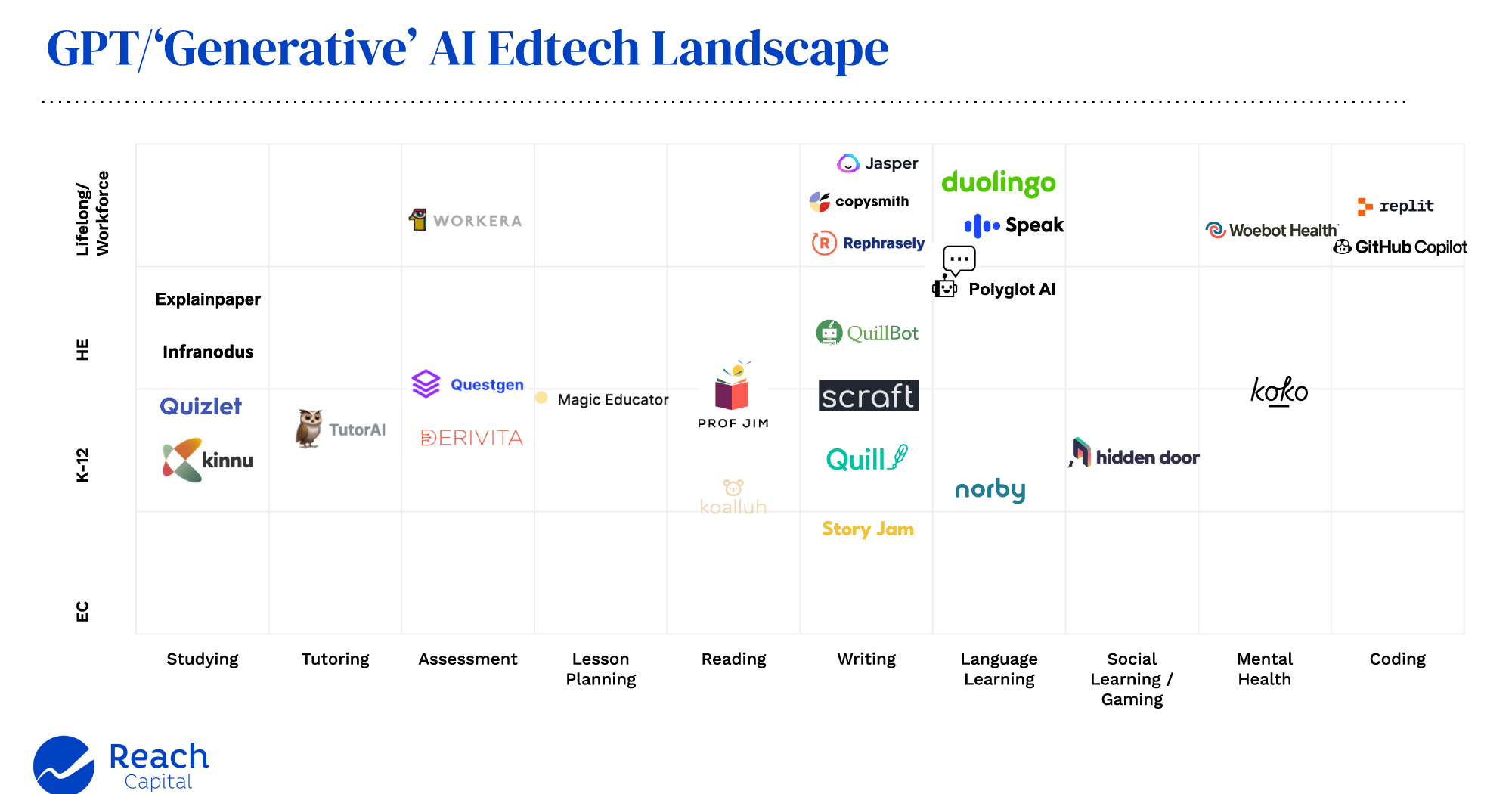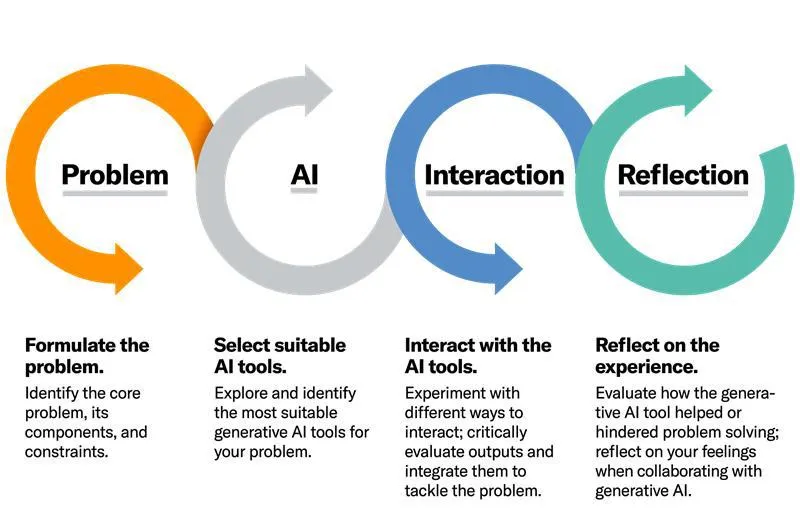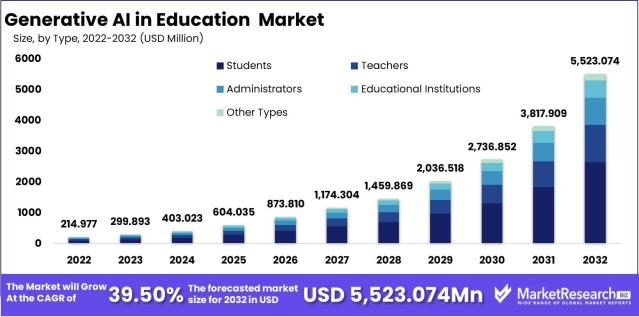If I were to ask you, can Generative AI in education outperform students in competitive assessments like that of Harvard’s or Stanford’s, what would your answer be? Maybe? Let me tell you, the answer is yes.
That’s the exciting world of generative AI, shaking things up everywhere across the globe, be it logical assessments, medical exams, or a thought-provoking essay at the Ivy Leagues.
Read: Chatbot vs Medical Student Performance on Clinical Reasoning Examinations
Now, before you imagine robots taking over classrooms, hold on! Generative AI isn’t here to replace humans, it’s more of a super-powered sidekick for education.
From unequal access to education to stressed-out teachers and confused students, the education landscape faces a lot of challenges. Generative AI isn’t here to steal anyone’s job, but maybe, it can help us fix the problems, ushering in a new era of learning and creativity.
Should ChatGPT be banned in schools?
Role of AI in Education
Here’s how generative AI is reshaping the education landscape:
Personalized Learning
Traditionally, education has relied on a standardized approach. This “one-size-fits-all” method often leaves students behind or bored, failing to cater to their individual learning styles and paces. Generative AI disrupts this model by tailoring the education experience to individual students’ needs.
With the help of vast amounts of data, it adapts the learning content, pace, and style to suit the strengths, weaknesses, and preferences of each learner, ensuring that no student is left behind.
This personalized approach accommodates different learning styles, such as visual, auditory, reading-writing, or kinesthetic, ensuring that students receive tailored support based on their unique preferences and abilities, while also providing immediate feedback and support.
AI in Action
For instance, Duolingo leverages generative AI to create personalized learning experiences for young children. The app tailors its content based on a child’s progress, offering interactive activities, games, and even AI-generated stories that reinforce learning. In addition, Khan Academy has launched Khanmigo, an AI tutor that assists young students in various subjects on its platform.

Accessibility and Inclusivity: Breaking Barriers for All
Traditionally, access to quality education has been heavily reliant on individuals’ geographical access and socio-economic background. Generative AI disrupts this norm by delivering high-quality educational resources directly to students, regardless of their backgrounds.
Now, people in remote areas with limited access to knowledge bases, diverse learning environments, and styles, can leverage Generative AI, for personalized tutoring and learning.
Generative AI further promotes inclusivity and global collaboration by facilitating language learning through the translation of educational content into multiple languages and adapting materials to fit local cultural contexts. It plays a crucial role in developing inclusive and accessible educational content suitable for diverse learner populations.
Moreover, Generative AI can be personalized to support students with special needs by providing customized learning experiences through assistive functions and communication technologies. This ensures that students with diverse requirements have access to top-quality learning materials.
Curious how generative AI is reshaping the education landscape? Learn what an expert educator has to say!
AI in Action
For instance, Dreamreader is an AI-powered platform that tailors reading experiences to a student’s reading level and interests. It generates personalized stories with adjustable difficulty, keeping students engaged and motivated to improve their reading skills.
As technology becomes more accessible, platforms are emerging that enable anyone, even those without coding skills, to create their own “Chat GPT bots,” opening doors of accessibility for all.
Beyond Textbooks: Immersive Learning Adventures
Generative AI has also fostered the emergence of hybrid schools, virtual classrooms, remote learning, and micro-learning, allowing students to access education beyond the confines of a traditional classroom, and opening up a world of limitless learning opportunities.
Generative AI can transport students to the heart of historical events, conduct virtual experiments in a simulated lab, or even practice a new language with an AI-powered conversation partner.
AI in Action
Platforms like Historyverse and Hellohistory.AI are prime examples. This AI-powered platform allows students to step into historical simulations, interacting with virtual characters and environments to gain a deeper understanding of the past.
Explore the 2024 trends of AI in marketing
Support for Educators: AI as a Partner in Progress
Far from replacing teachers, generative AI is here to empower them. With personalized lesson planning and content creation, AI-assisted evaluation and feedback, intelligent tutoring systems, and virtual teaching assistants, AI can free up valuable teacher time.
This allows educators to focus on what they do best: fostering student engagement, providing personalized instruction, and pursuing professional development. In a future where AI can be a leading source of disseminating information and taking the lead in delivering information, it becomes crucial to reconsider our approach towards education.
Rather than sticking to traditional classrooms, picture a flipped classroom model, a hybrid learning setup where students can engage in remote self-learning and use physical classrooms for interactive group activities and collaborative learning. It’s all about blending the best of both worlds for a more effective and engaging educational experience.
Generative AI is reshaping the roles and dynamics of the education system, encouraging educators to evolve from knowledge deliverers to facilitators. They need to become mentors who guide and encourage student agency, fostering a collaborative environment built on co-agency and collective intelligence.
AI in Action
Take a look at GradeScope, a product by Turnitin, a real-world example of generative AI empowering teachers. This platform uses AI to automate the time-consuming task of grading written assignments. Teachers upload student work, and GradeScope utilizes AI to analyze handwriting, identify key concepts, and even provide students with initial grading and personalized feedback.
This frees up valuable teacher time, allowing them to focus on more individualized instruction, like one-on-one conferences or in-depth discussions about student writing. This is the power of generative AI as a partner in education – it empowers teachers to do what they do best: inspire, guide, and unlock the potential in every student.
Here’s what every educator must know!
Shift Towards Metacognitive Continuous Learning
Generative AI is ushering in a new era of “metacognitive continuous learning”. This approach to assessment focuses on students’ ability to understand, monitor, and regulate their cognitive and metacognitive processes, making it an integral part of the learning process.
In metacognitive continuous learning, students not only acquire knowledge but also reflect on their learning strategies and adapt them as needed. They actively engage in self-regulation to optimize their learning experience and become aware of their thinking processes.
AI systems help students recognize their strengths and weaknesses, suggest strategies for improvement, and promote a deeper understanding of the subject matter. By leveraging AI-supported feedback, students develop essential skills for lifelong learning.
This shift represents a move away from traditional tests that measure memory recall or specific skills and towards a more student-centered and flexible approach to learning, making students self-directed learners. It recognizes that learning is not just about acquiring knowledge but also about understanding how to improve our learning strategies.
Read about the game-changing moments in AI
Critical Skills to Survive and Thrive in an AI-driven World
While generative AI offers a treasure trove of educational content, it’s crucial to remember that information literacy is essential. Students need to develop the ability to critically evaluate AI-generated content, assessing its accuracy, and biases, leveraging AI to augment their own capabilities rather than blindly relying on it.
Here is a range of key skills that learners need to develop to thrive and adapt. These skills include:
Critical Thinking: Learners must develop the ability to analyze information, evaluate its credibility, and make informed decisions. Critical thinking allows individuals to effectively navigate the vast amount of data and AI-generated content available.
Problem-solving: AI presents new challenges and complexities. Learners need to be able to identify and define problems, think creatively, and develop innovative solutions. Problem-solving skills enable individuals to leverage AI technology to address real-world issues.
Adaptability: The rapid pace of technological change requires learners to be adaptable. They must embrace change, learn new tools and technologies quickly, and be willing to continuously evolve their knowledge and skills.
Data and AI Literacy: With AI generating vast amounts of data, learners need to develop the ability to understand, interpret, and analyze data so that they can make data-driven decisions and leverage AI technologies effectively. They must also possess AI literacy skills to navigate AI-driven platforms, understand the ethical implications of AI, and effectively use digital tools for learning and work.
The Human Edge – Fostering Creativity, Emotional Intelligence, and Intuition: While AI excels at crunching numbers and following patterns, certain qualities remain uniquely human and will continue to be valuable in the age of AI. AI can generate content, but it takes human imagination to truly push boundaries and come up with groundbreaking ideas.
Our ability to empathize, build relationships, and navigate complex social situations will remain crucial for success in various fields. In addition, the ability to tap into our intuition and make gut decisions can be a valuable asset, even in the age of data-driven decision-making.
Can AI truly replace humans? Let’s find out now
Effectively Leveraging Generative AI for Education: The PAIR Framework
To equip students with critical thinking and problem-solving skills in the age of AI, the PAIR framework is a very useful tool. This four-step approach integrates generative AI tools into assignments, encouraging students to actively engage with the technology.
- Problem Formulation:
The journey begins with students defining the problem or challenge they want to tackle. This initial step fosters critical thinking and sets the stage for their AI-powered exploration.
- AI Tool Selection:
Students become discerning consumers of technology by learning to explore, compare, and evaluate different generative AI tools. Understanding available features allows them to choose the most appropriate tool for their specific problem.
- Interaction:
Armed with their chosen AI tool, students put their problem-solving skills to the test. They experiment with various inputs and outputs, observing how the tool influences their approach and the outcome.
- Reflection:
The final step involves critical reflection. Students assess their experience with the generative AI tool, reporting on its strengths, weaknesses, and overall impact on their learning process. This reflection solidifies their understanding and helps them become more self-aware learners.
By incorporating the PAIR framework, students develop the skills necessary to navigate the world of AI, becoming not just passive users, but empowered learners who can leverage technology to enhance their problem-solving abilities.

The Road Ahead: Challenges, Considerations, and Responsible Implementation
As with any new technology, generative AI comes with its own set of challenges. Ensuring that AI systems are trained on unbiased data sets is crucial to prevent perpetuating stereotypes or misinformation. Additionally, it’s important to remember that the human element remains irreplaceable in education.
Academic Dishonesty
AI tools can be misused for plagiarism, with students using them to generate essays or complete assignments without truly understanding the content.
Rather than outright banning these tools, educational institutions need to promote ethical and responsible AI usage. This entails establishing transparent guidelines and policies to deter dishonest or unethical practices.
Accuracy and Bias
Generative AI models are trained on vast amounts of data, which can perpetuate biases or inaccuracies present in that data. They are often trained on datasets that may not adequately represent the cultural and contextual diversity of different regions.
This can lead to a lack of relevance and inclusivity in AI-generated content. Uncritical use of AI-generated content could lead students to faulty information. In addition, localization efforts are needed to ensure that generative AI systems are sensitive to cultural nuances and reflect diverse perspectives.
Overdependence on Technology
Overreliance on AI tools for learning can hinder critical thinking and problem-solving skills. Students may become accustomed to having solutions generated for them, rather than developing the ability to think independently.
Educating users about AI’s limitations, potential risks, and responsible usage, becomes extremely important. It is important to promote AI as a tool designed to augment human capabilities rather than holding them back.
Readiness Disparities
While generative AI offers tremendous potential for improving accessibility and inclusion in education, on some occasions, it can also exacerbate existing disparities. The integration of generative AI hinges on “technological readiness” – meaning adequate infrastructure, reliable internet access, proper training, and digital literacy.
These factors can vary greatly between regions and countries. Unequal access to these resources could create a situation where generative AI widens, rather than shrinks, the educational gap between developed and developing nations.
These disparities must be addressed to ensure that generative AI reaches all students, regardless of their background, ensuring a more equitable society.
Way Forward: A Balanced Approach

Generative AI undoubtedly holds the potential to reshape the education landscape, by providing personalized learning, improving content, automating tasks, and reducing barriers to education.
To successfully leverage these benefits, a balanced approach is necessary that promotes responsible integration of AI in educational settings, while preserving the human touch. Moreover, it is crucial to empower educators and learners with the relevant skills and competencies to effectively utilize Generative AI while also fostering dialogue and collaboration among stakeholders.
By striking a balance between leveraging its potential benefits and mitigating the associated risks, the equitable integration of Generative AI in education can be achieved, creating a dynamic and adaptive learning environment that empowers students for the future.








